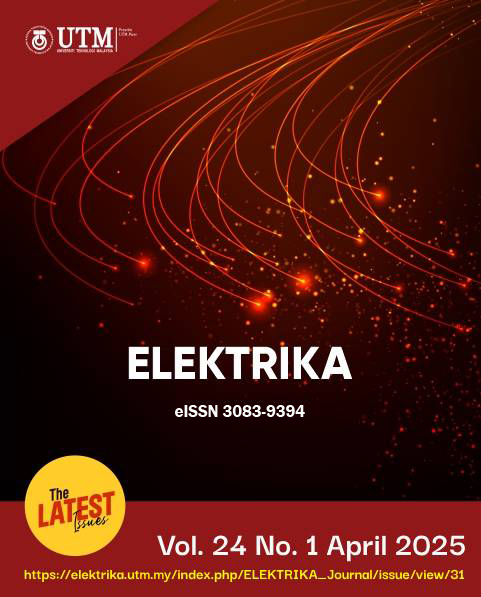Implementation of 10 Transistor SRAM Computing-in-Memory for Binarized Multiply Accumulate Unit
DOI:
https://doi.org/10.11113/elektrika.v24n1.632Keywords:
Computing-in-Memory (CiM), Binarized Neural Network (BNN), Multiply Accumulate (MAC)Abstract
The von Neumann bottleneck is a major challenge in the development of energy-efficient processors capable of handling high-workload computations. Computing-in-memory (CiM) technique offers a promising solution to overcome the memory wall restrictions that limit performance. By embedding processing units directly into memory, CiM can mitigate issues of latency and energy consumption during memory access. In this study, we implemented a dual-port design method for a 10-Transistor (10T) SRAM bit-cell to perform Binarized Multiply-Accumulate operation using 45nm CMOS process technology. We use several functional block designs, including isolated read and write paths, to design the 1Kb CiM architecture using the Cadence Virtuoso EDA tool. The proposed 10T SRAM-CiM design supports fully parallel computing, allowing it to perform 32 Binarized MAC operations simultaneously. The design achieves a maximum operating frequency of 100MHz, a throughput of 204.8 GOPS and energy efficiency of 443.15 TOPS/W.
Downloads
Published
How to Cite
Issue
Section
License
Copyright of articles that appear in Elektrika belongs exclusively to Penerbit Universiti Teknologi Malaysia (Penerbit UTM Press). This copyright covers the rights to reproduce the article, including reprints, electronic reproductions, or any other reproductions of similar nature.
















